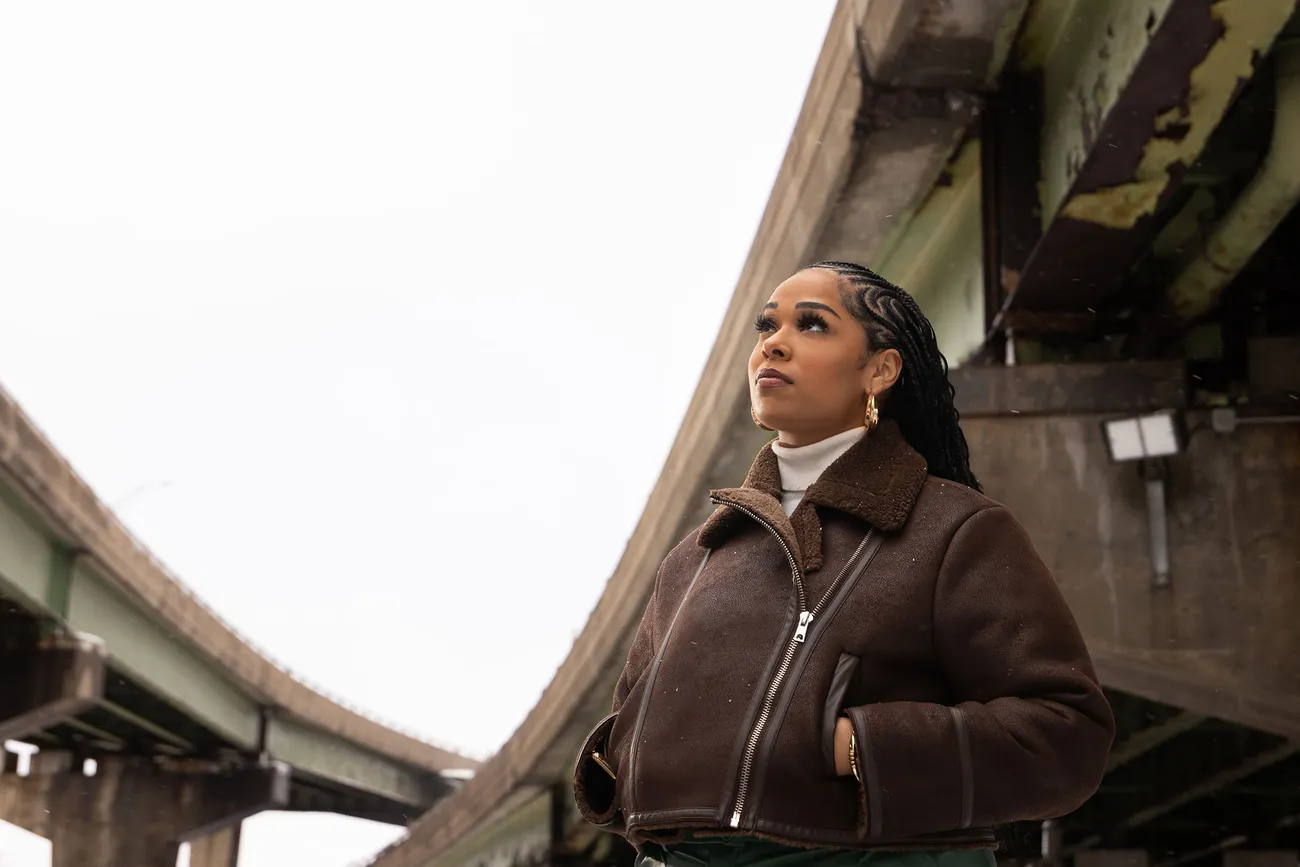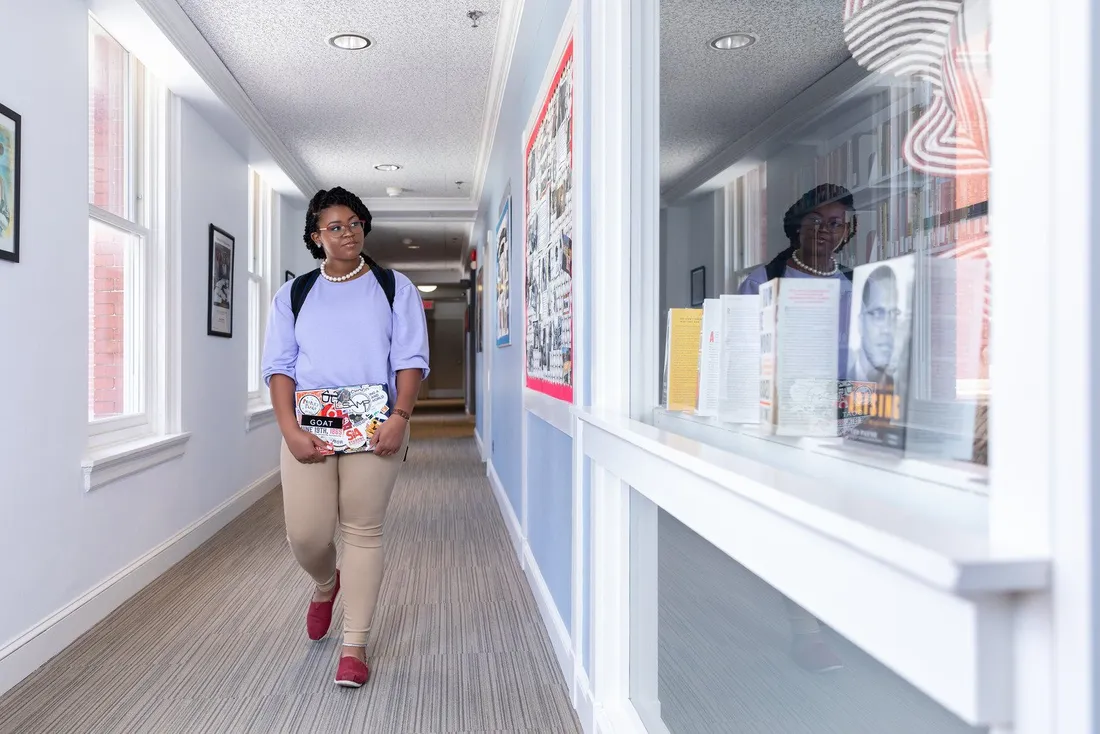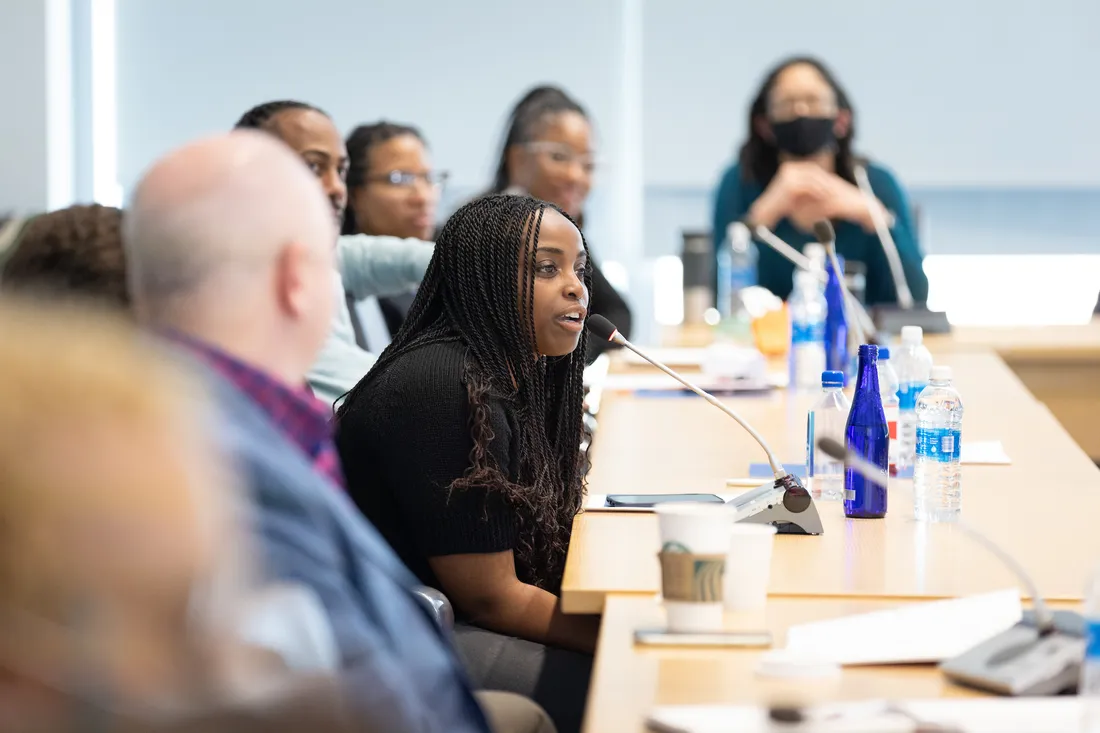Adara “Darla” Hobbs ’22, G’26 is not just writing her own story—she’s helping reframe her community’s narrative. An embodiment of agency and determination, Hobbs also is a force for change in the City of Syracuse. She’s drawing on her research at Syracuse University to ensure a promising future for her fellow residents.
“I have a comprehensive understanding of the area, having grown up in Syracuse’s Westside and worked for many years in the Southside,” says Hobbs, a master’s student in Pan African studies in the College of Arts and Sciences. “The city is a microcosm of Black cultural diversity, representing who I am and where I’ve come from.”
Hobbs transferred from SUNY Oswego to Syracuse, where she majored in communication and rhetorical studies in the College of Visual and Performing Arts. The experience, augmented by a minor in African American studies, impelled her to learn more about the global African experience.
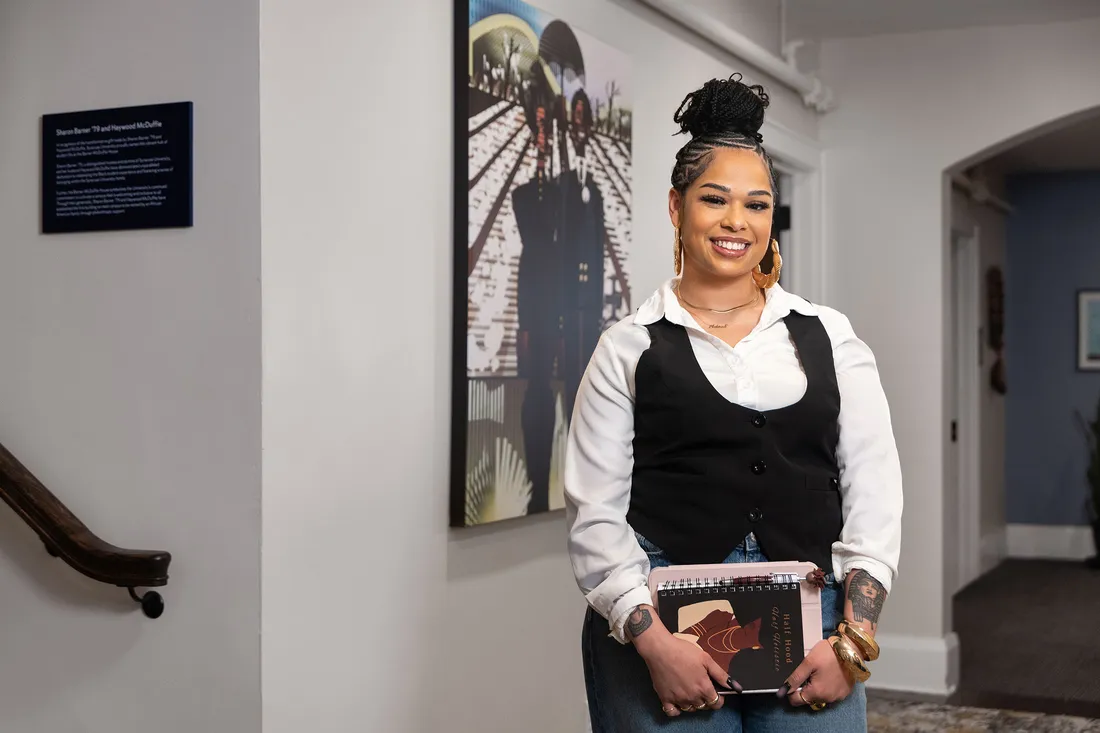
A master’s student in Pan African studies, Hobbs is interested in learning more about the global Black experience. “If you want to change the world, you start with your own community,” says the Syracuse native.
Last fall, she was awarded a two-year master’s fellowship from the Lender Center for Social Justice to study the impact of discriminatory housing practices, like redlining, on local communities.
“If you want to change the world, you start with your own community,” says Hobbs, who’s using the fellowship to advocate for fair housing laws and policies. “I’m excited to give back, to put my education to work for others.”
Understanding Race and Labor
Redlining is a discriminatory practice that denies specific neighborhoods access to financial services and resources. Although redlining was outlawed in 1968, its negative effects have persisted.
Hobbs points out that redlining has limited the economic opportunities of Black people. Such discrimination also reflects the “long, complicated” relationship between race and labor.
“My research reveals that work is integral to the collective Black experience, that labor rights are human rights,” says Hobbs, who also is pursuing a Public Management and Policy Certificate of Advanced Study in the Maxwell School of Citizenship and Public Affairs.
She adds that labor, in the context of Black history, is a key theme that ties into the broader narrative of resistance, migration and collective action.
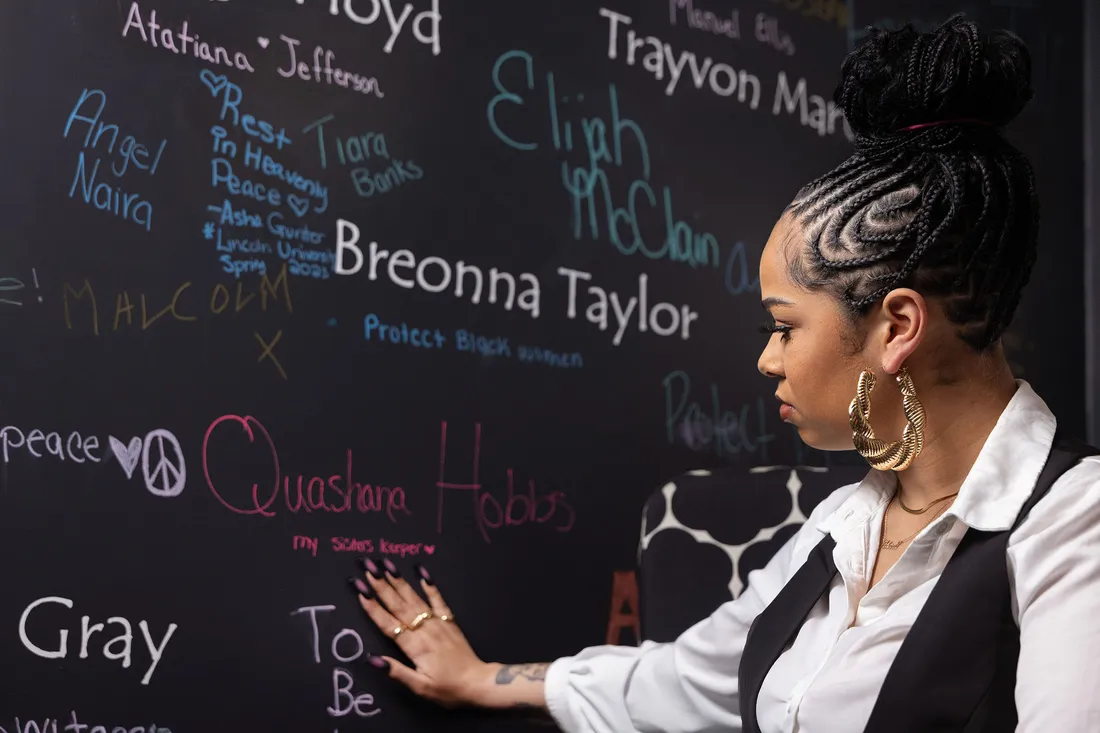
“Black History Month is an ever-evolving story about resilience, perseverance and overcoming obstacles,” says the former Our Time Has Come Scholar.
In fact, it was labor that brought millions of Black people to urban centers like Syracuse in the first half of the 20th century. The influx coincided with the rise of Black History Month as an idea in the 1910s and its official recognition some 60 years later.
“Syracuse was desirable because it provided many Black people with steady work and safe, affordable housing,” says Hobbs, a former Our Time Has Come Scholar. “But that changed during the Great Depression.”
Faced with a housing shortage in the 1930s, the federal government instituted programs to encourage white homeownership. Out of them grew banking practices like redlining—named for red lines that mortgage lenders drew on maps to indicate areas of financial risk—involving local politicians and real estate professionals. The City of Syracuse was no exception.
I’m doing everything I can to mobilize our people to shift the trajectory of our city’s future.
Adara “Darla” Hobbs ’22, G’26
Hobbs notes that redlining later informed the Federal-Aid Highway Act of 1956, resulting in the construction of I-81 through Central New York the following decade. The interstate project displaced nearly a thousand families, many of whom were from the 15th Ward, a historic neighborhood that housed about 90% of Syracuse’s Black population.
Concerned that the current I-81 Viaduct Project is repeating history, Hobbs is analyzing census and population data to determine how historical redlining still affects public health outcomes and employment trajectories.
She’s also meeting with residents, some of whom were displaced in the ’60s, to figure out “what’s to come.” “Hearing their stories raises awarenesses about the consequences of redlining and urban renewal projects.”
Empowering the Future
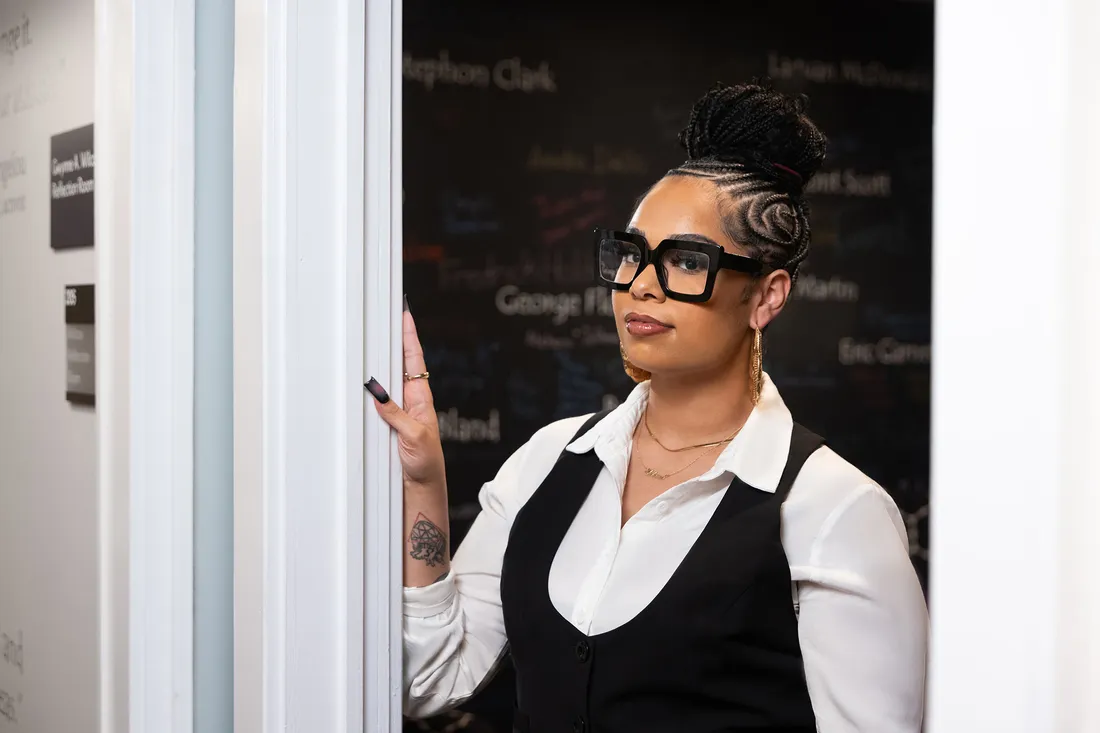
Hobbs also is pursuing a Public Management and Policy Certificate of Advanced Study. She seeks to understand the experiences of marginalized people on campus and throughout the community.
Hobbs’ commitment to challenging these inequities highlights how labor—physical and intellectual—underscores Black empowerment and social change.
“Just as we invest resources to understand the experiences of marginalized students on campus, we should do the same for members of our community,” she says. “This includes enacting policies and programs that benefit everyone.”
By advocating for fair housing laws and addressing the upset caused by policies that denied Black communities access to housing and employment, Hobbs reaffirms that labor and access to economic opportunities are essential to building a more just America.
“Black History Month is an ever-evolving story about resilience, perseverance and overcoming obstacles,” she continues. “I’m doing everything I can to mobilize our people to shift the trajectory of our city’s future.”

